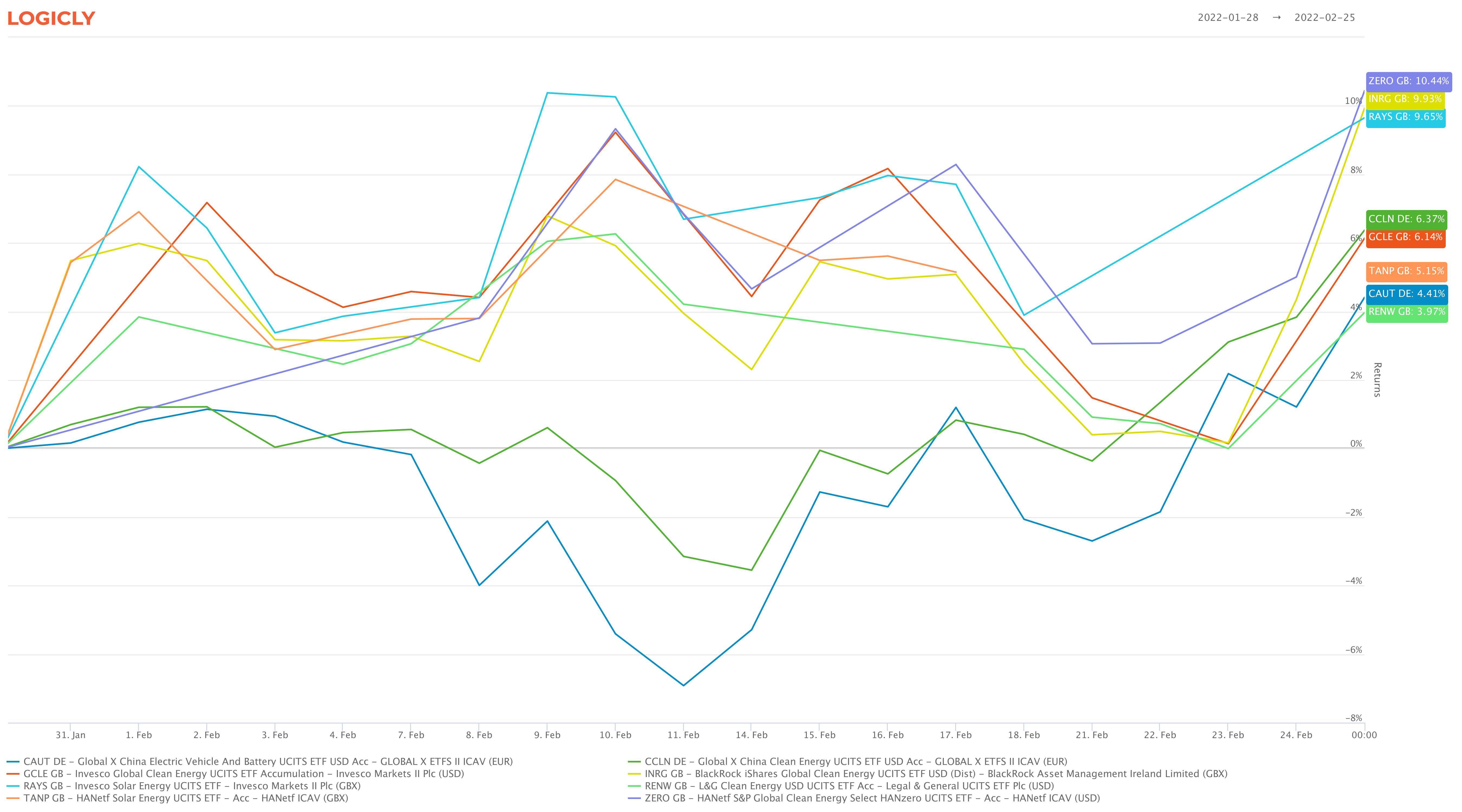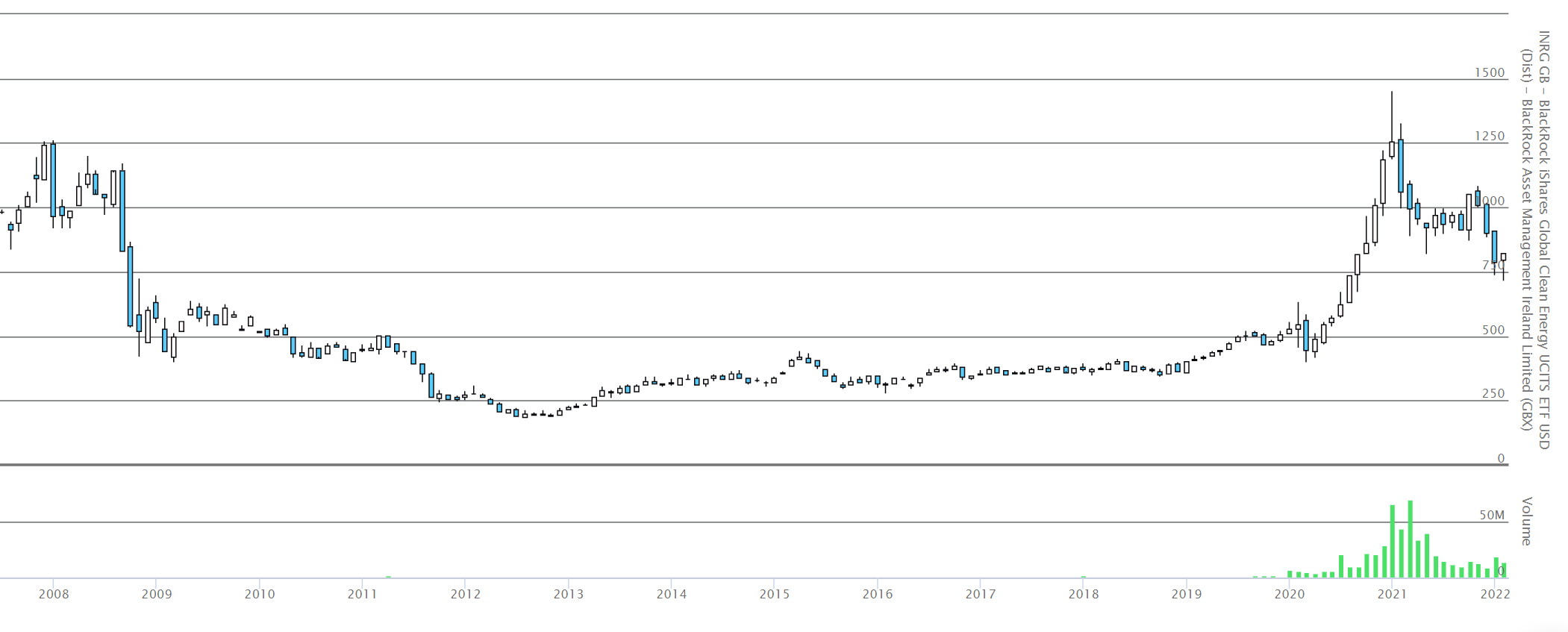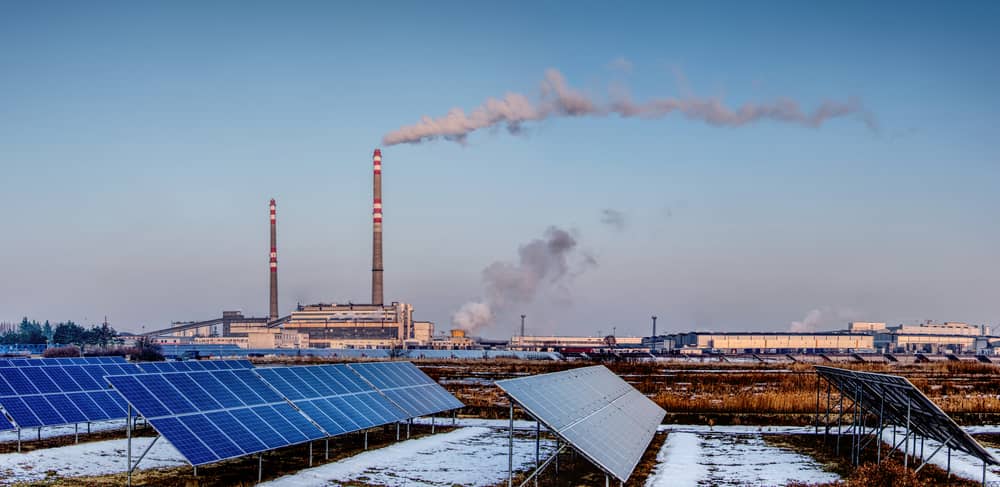Clean energy ETF returnshave soared over the past week as pressure mounts on governments to shift their dependence away from geopolitically sensitive fossil fuels and towards alternativessuch as renewable energies.
The iShares Global Clean Energy UCITS ETF (INRG) led with 9.5% gainsin the week to 25 February, according todata from ETFLogic.
Following behind, the HANetf S&P Global Clean Energy Select HANzero UCITS ETF (ZERO) rose 7.2% over the weekwhile the Invesco Global Clean Energy UCITS ETF (GCLX) and Global X China Clean Energy UCITS ETF (CCLN) jumped 6.1% and 5.6%, respectively.
Interestingly, this burst of energy extended to ETFs focusing on clean energy subsectors including solar power and hydrogen – and wind power and electric vehicles, to a lesser extent.
The Global X Solar UCITS ETF (RAYG) boomed 9.9% last week while the Invesco Solar Energy UCITS ETF (RAYS) soared 7.7% and the HANetf Solar Energy UCITS ETF (TANP) jumped 6.5%.
Not to be outdone, the Global X Hydrogen UCITS ETF (HYGG) added 7.8% and the VanEck Hydrogen Economy UCITS ETF (HDRO) returned 5.5%.

Source: ETFLogic
While renewable energies tend to suffer during risk-off markets, European nations’ exposure to surging oil and gas prices underlined a hardly new fact - countries need to reduce their dependence on fossil fuels from Russia, which currently make up more than a third of the continent's energy supply.
Though high and perhaps further-increasing oil prices are a draw for some investors, others have looked at cleaner sources as cheaper alternatives. Between current price advantages and potential for greater energy security, some have found the case for renewables compelling.
Key policymakers and industry participants are also keeping up the momentum in the theme, with Germany revealing plans to have a totally renewables-based electricity supply by 2035 while executives of the largest turbine manufacturers are continuing to pressure European Commission President Ursula von der Leyen to speed up permits for new wind farms, Bloomberg reported last week.
However, as illustrated by the peaks and troughs in the long-term performance by the vast INRG ETF, the clean energy theme is subject to volatility and dips in and out of prominence, periodically.

Source: ETFLogic
The question now is whether the Russian invasion of Ukraine will prompt commitments to further scaling of renewable capacity across Europe. This, in turn, could offer a similar political tailwind to the theme as whenUS President Joe Biden made pledges to invest heavily in clean energy infrastructure during his 2020 presidential campaign.
Prior to the escalation of geopolitical tensions, the European Commission looked to be going in the opposite direction, taking a more middle-of-the-road approach by adding nuclear power and natural gas to its taxonomy of sustainable activities.
However, clean energy stocks have been happy to ride the current narratives while it prevails. On Monday, several companies posted double-digit gainswhile Enphase Energy and SolarEdge Technologies were the two best performers in the S&P 500.
Related articles









